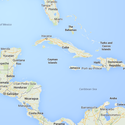-
About
- About Listly
- Community & Support
- Howto
- Chrome Extension
- Bookmarklet
- WordPress Plugin
- Listly Premium
- Privacy
- Terms
- DMCA Copyright
- © 2010-2025 Boomy Labs

 List Builder
List Builder
Listly by List Builder
Top Things to Do in Haifa, Israel, from a Cruise Ship - Feel free to add, vote or provide feedback to the list
The Bahá'í Gardens in Haifa comprise a staircase of nineteen terraces extending all the way up the northern slope of Mount Carmel. The geometry of the complex is built around the axis connecting it with the City of 'Akko, which also has great historical and sacred significance for Bahá'ís.
This article is about a millennial Temple movement called Templers. If you are looking for the article about Templars, see the article Knights Templar. If you are looking for the fictional series of the same subject, see The Knight Templar (Crusades trilogy).
The Port of Haifa is the largest of Israel's three major international seaports, which include the Port of Ashdod, and the Port of Eilat. It has a natural deep water harbor which operates all year long, and serves both passenger and merchant ships.
The Technion - Israel Institute of Technology ( Hebrew: הטכניון - מכון טכנולוגי לישראל) is a public research university in Haifa, Israel. Established in 1912, the Technion is the oldest university in Israel and was the first technical university in the Ottoman Empire.
The University of Haifa ( Hebrew: אוניברסיטת חיפה) ( Arabic: جامعة حيفا) is a public research university in Haifa, Israel. The University of Haifa was founded in 1963 by Haifa mayor Abba Hushi, to operate under the academic auspices of the Hebrew University of Jerusalem, Haifa university is located on Mount Carmel.
Haifa ( Hebrew: חֵיפָה , Hebrew pronunciation: , colloquial Hebrew pronunciation: ; Arabic: حيفا ) is the largest city in northern Israel, and the third largest city in the country, with a population of over 272,181. Another 300,000 people live in towns directly adjacent to the city including Daliyat al-Karmel, the Krayot, Nesher, Tirat Carmel, and some Kibbuzim.
Wadi Nisnas ( Arabic: وادي النسناس) is an Arab neighborhood in the city of Haifa in northern Israel. Nisnas is the Arabic word for mongoose, an indigenous animal. The wadi has a population of about 8,000 inhabitants.
Ein Hod ( Hebrew: עֵין הוֹד) is a communal settlement in northern Israel. Located south of Mount Carmel and southeast of Haifa in northern Israel, it falls under the jurisdiction of Hof HaCarmel Regional Council. In 2008 it had a population of 559.
The Tikotin Museum of Japanese Art is a museum on the crest of Mount Carmel, in Haifa, Israel, dedicated to the preservation and exhibition of Japanese art. It is the only such museum in the Middle East. It was established in 1959 on the initiative of Felix Tikotin of the Netherlands, and Abba Hushi, then mayor of Haifa.
Emmanuel Mané-Katz, ( Hebrew: מאנה כץ ) born Mane Leyzerovich Kats (1894-1962), was a Jewish painter born in Kremenchuk, Ukraine, best known for his depictions of the Jewish shtetl in Eastern Europe.
The Haifa Museum of Art ( Hebrew: מוזיאון חיפה לאמנות) ( Arabic: متحف حيفا للفنون), established in 1951, is located in a historic building built in the 1930s in Wadi Nisnas, Downtown Haifa. The museum focuses on Israeli and international contemporary art, and its collection includes 7,000 items, mostly of contemporary Israeli art.
The National Maritime Museum ( Hebrew: המוזיאון הימי הלאומי, HaMuze'on HaYami HaLe'umi) ( Arabic: المتحف البحري الوطني) is a maritime and Archaeological museum in Haifa, Israel. The museum was founded in 1953, based on the private collection of its founder and first director, Aryeh Ben- Eli.
Tel Afek, ( Hebrew: תל אפק), also spelled Aphek and Afeq, is an archaeological site located in the coastal hinterland of the Ein Afek Nature Reserve, east of Kiryat Bialik, Israel. It is also known as Tel Kurdani.
Reuben R. Hecht (15 August 1909 - 14 April 1993) was an Israeli industrialist. He was the founder of the Hecht Museum. In 1984, he was awarded the Israel Prize for Exemplary Lifetime Service to the Society and State.
The museum features the railway history of Israel, its predecessor states and neighbouring countries back to 1892. The location itself is an attraction, as it was the shed for the Jezreel Valley branch of the former Hejaz Railway.
